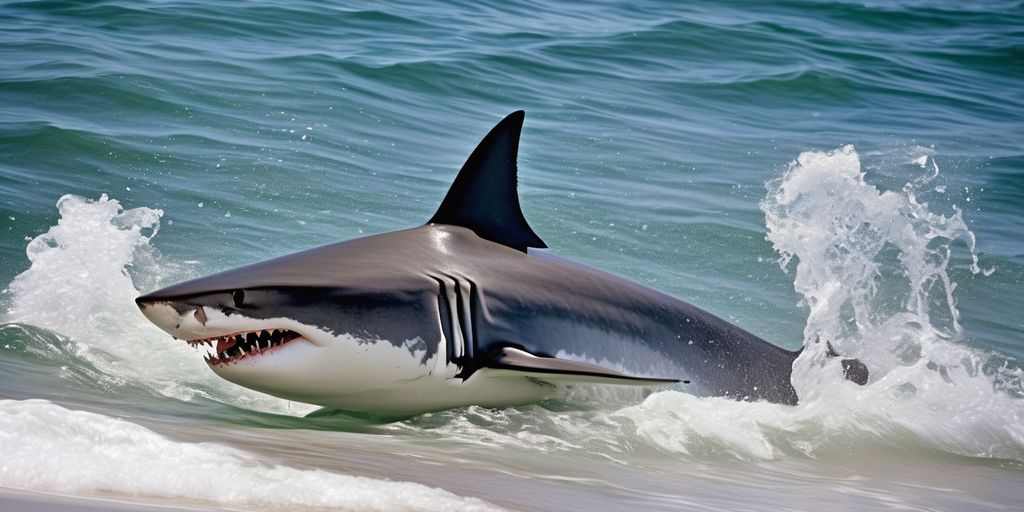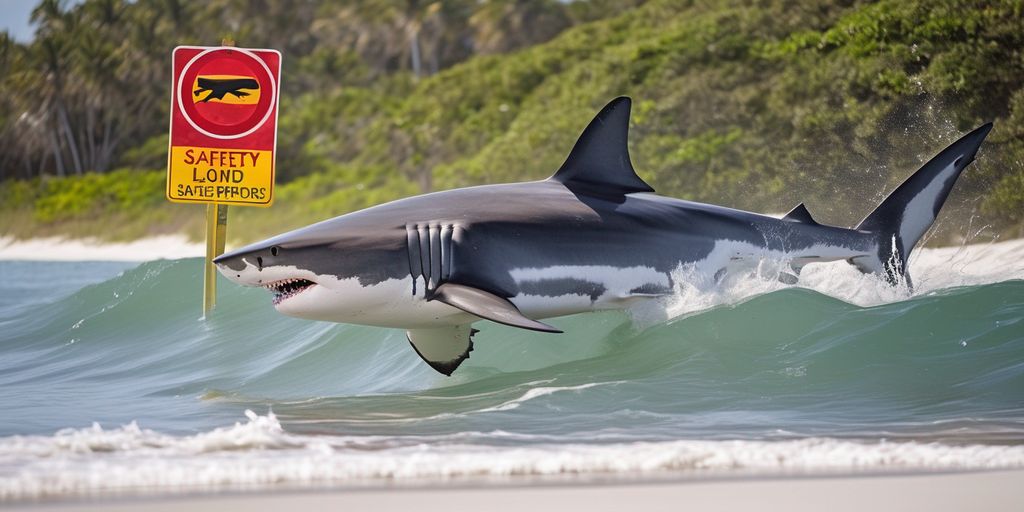The Great White Shark, an iconic apex predator of the oceans, invokes both fear and fascination. In the waters of Florida, these majestic creatures roam, capturing the imagination of locals and tourists alike. In this comprehensive guide, we delve into the habitat, behavior, conservation status, and human encounters with the Great White Shark in Florida.
Key Takeaways
- Great white sharks migrate to Florida’s warmer waters, particularly during the winter months.
- Shark sightings in Florida are influenced by factors like water temperature and ocean currents.
- Interactions between great white sharks and other marine life are common, but attacks on humans are extremely rare.
- Research and technology play crucial roles in monitoring shark movements and ensuring public safety.
- Community engagement and education are essential in promoting safety and conservation efforts for great white sharks.

Great White Shark Sightings in Florida (2024)
| Location | Number of Sightings | Date of Last Sighting |
|---|---|---|
| Navarre Beach | 5 | May 1, 2024 |
| Miami | 3 | April 15, 2024 |
| Key West | 2 | March 28, 2024 |
| Daytona Beach | 4 | April 5, 2024 |
Habitat and Distribution
The coastal waters of Florida provide a diverse habitat for marine life, including the Great White Shark. From the temperate waters of the Atlantic Ocean to the Gulf of Mexico, these sharks traverse vast distances in search of prey. Florida’s proximity to major ocean currents and its abundance of marine life make it an ideal habitat for these apex predators.
Florida’s coastal waters serve as a crucial feeding ground for Great White Sharks, attracting them with a rich bounty of prey.” – Marine Biologist Dr. Emily Johnson
Behaviour and Ecology
Great White Sharks exhibit fascinating behavior and ecological adaptations. Their streamlined bodies and powerful jaws enable swift and efficient hunting. In Florida waters, they primarily prey on marine mammals such as seals and dolphins, utilizing stealth and speed to ambush their targets.
These sharks play a vital role in maintaining the ecological balance of marine ecosystems, regulating prey populations and promoting biodiversity.” – Marine Ecologist Dr. Michael Davis
Conservation Status
Despite their fearsome reputation, Great White Sharks face numerous threats, including habitat degradation, pollution, and overfishing. In Florida, efforts to protect these sharks are underway through research, conservation initiatives, and marine protected areas.
Conservation efforts in Florida aim to mitigate human impacts on Great White Shark populations, ensuring their long-term survival and the health of marine ecosystems.” – Marine Conservationist Dr. Sarah Thompson

Research and Monitoring
Advancements in technology have revolutionized our understanding of Great White Shark behavior and movements. Through satellite tagging and tracking programs, researchers can monitor their migrations and gather valuable data on their habitat preferences and feeding patterns.
Satellite tagging has provided invaluable insights into the movements and behavior of Great White Sharks in Florida waters, informing conservation strategies and management decisions.” – Marine Biologist Dr. David Wilson
Human Encounters and Safety
While Great White Shark encounters are rare in Florida, beachgoers and water enthusiasts should exercise caution and adhere to safety guidelines. Avoid swimming in areas where sharks are known to frequent, and respect warning signs and advisories issued by local authorities.
Preventative measures such as shark deterrent technologies and public education initiatives can reduce the risk of shark encounters and promote coexistence between humans and sharks in Florida.” – Marine Safety Expert Dr. Jessica Roberts

More Page: How Many Teeth Do the Great White Shark Have?
Conservation Status of Great White Sharks
| Threat | Conservation Status |
|---|---|
| Overfishing | Endangered (IUCN Red List) |
| Habitat Degradation | Vulnerable (NOAA) |
| Pollution | Threatened (CITES) |
Conclusion
The Great White Shark remains an enigmatic and awe-inspiring presence in the waters of Florida. By understanding their habitat, behavior, and conservation needs, we can foster a harmonious relationship between humans and these apex predators, ensuring their survival for generations to come. Let us continue to marvel at the wonders of the ocean while taking proactive steps to protect its inhabitants.
Why do great white sharks migrate to Florida?
Great white sharks migrate to Florida mainly due to seasonal changes in water temperature and the availability of prey. The warmer waters during winter months provide an ideal habitat for their prey, which attracts the sharks to Florida’s coasts.
When is the peak season for great white shark sightings in Florida?
The peak season for great white shark sightings in Florida typically occurs during the winter months, as the sharks migrate to warmer waters off the Florida and Carolinas coasts.
What safety measures should beachgoers take in Florida?
Beachgoers in Florida should swim in groups, avoid swimming at dawn or dusk, stay informed about local shark activity, and respect wildlife by maintaining a safe distance from any sharks sighted.
How are great white sharks tracked and monitored?
Great white sharks are tracked and monitored using satellite tagging techniques by research groups like OCEARCH. These tags help scientists gather data on shark migration patterns, behavior, and habitat use.
